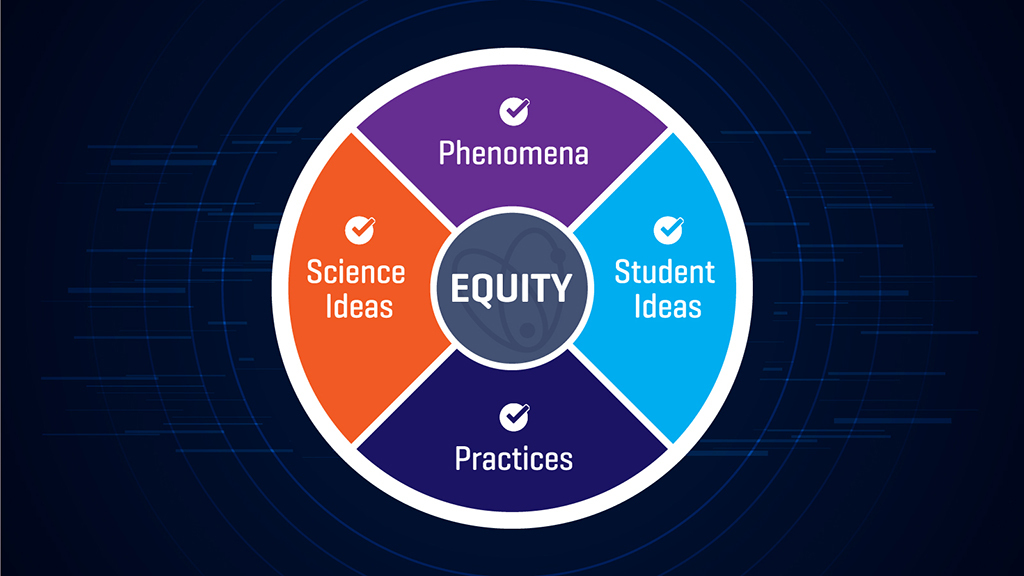Next Gen Navigator
Sensemaking at a Distance
Posted on 2020-12-17

Disclaimer: The views expressed in this blog post are those of the author(s) and do not necessarily reflect the official position of the National Science Teaching Association (NSTA).
Exploring Sensemaking at a Distance
Science teaching and learning this year likely looks completely different in various states, districts, schools, and even science “classrooms” to the casual observer. But stop and take a closer look and listen: Students and teachers across the country are still actively trying to make sense of how the world works—or sensemaking—whether separated by six feet or multiple miles.
If sensemaking is new to you, you might be wondering what to look and listen for. Excellent question! NSTA identifies four critical aspects of sensemaking (based on contemporary research on how students learn science as articulated in A K–12 Framework for Science Education):
- Phenomena (Natural phenomena are observable events that occur in the universe and that we can use our science knowledge to explain or predict: STEM Teaching Tool 42);
- Science and Engineering Practices;
- Student Ideas; and
- Science Ideas (Disciplinary Core Ideas).
Students experience a puzzling or intriguing phenomenon together—a catfish fossil found in the middle of a desert, nets that capture water vapor from the air, an upside-down image projected by a pinhole camera—that causes them to ask questions. This creates in students a genuine need to engage in science and engineering practices to build the science ideas absolutely necessary to explain how or why the phenomenon occurred (the science ideas the teacher was targeting when they chose the phenomenon to share with students). Fully engaging in the science and engineering practices requires students to share ideas, evaluate competing ideas, give and receive peer feedback, and reach consensus. Sensemaking provides access to science literacy to all students in the classroom learning community; students and teacher build and refine science knowledge together.
Whether a novice or expert in sensemaking, you may further wonder how teachers are providing students opportunities for sensemaking in ever-changing learning settings. In this issue of the Next Gen Navigator, educators share their experience with sensemaking-at-a-distance and reflect on their successes and challenges. Can you find the four critical aspects of sensemaking in their stories? Which aspect (or aspects) proved to be most challenging? How have you overcome some of these same challenges in your classroom?

Kate Soriano
Next Gen Navigator Guest Editor
Kate Soriano began her career as a geologist for the Environmental Protection Agency’s Superfund program. Her work explaining science to affected communities made her realize that many people did not have access to a high-quality science education, and she wanted to change that. Soriano now has more than 20 years of experience teaching K–12 students science in both formal and informal educational settings. She currently serves as NSTA’s Standards Implementation Specialist, supporting teachers in implementing the NGSS and other three-dimensional standards based on A Framework for K–12 Science Education.
Designing Equitable Engagement in Sensemaking
Veteran science educators David Crowther, Lynn Jeka, and Rita MacDonald discuss how the Design Principles for Engaging Multilingual Learners in Three-Dimensional Science can help teachers turn good science lessons into more equitable science instruction. Read more.
The Benefits of Nearpod for Sensemaking at a Distance
Massachusetts sixth-grade science teacher Dan Adler shares how Nearpod—his 2020 tech tool of choice for sensemaking at a distance—allows him to create engaging opportunities for his students to use the science and engineering practices to grapple with phenomena and exercise scientific thinking. Read more.
Successful Sensemaking and Data Exploration at a Distance
New York science teacher Daniel Sullivan explains why he is convinced of the value in providing students new pathways to explore and discover real problems via distance learning and the use of digital resources. Read more.
Note: The Next Gen Navigator is a monthly e-newsletter from NSTA delivering information, insights, resources, and professional learning opportunities for science educators by science educators on the Next Generation Science Standards and three-dimensional instruction. Click here to sign up to receive the Navigator every month.
The mission of NSTA is to promote excellence and innovation in science teaching and learning for all.
NGSS Professional Learning old Teacher Preparation Three-Dimensional Learning Middle School Elementary High School


